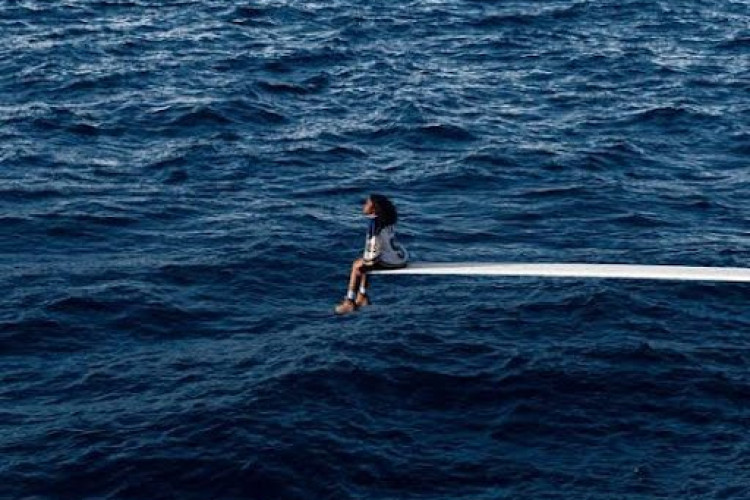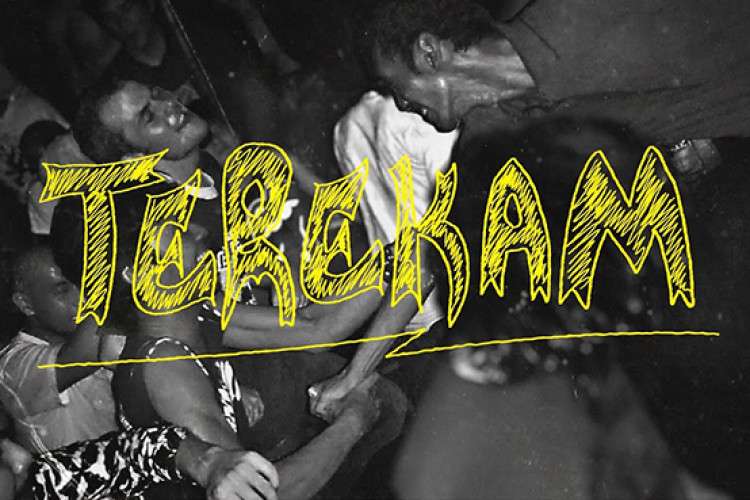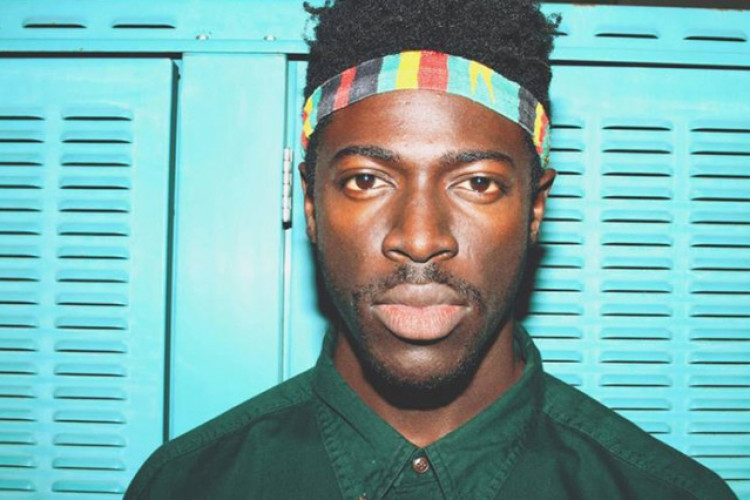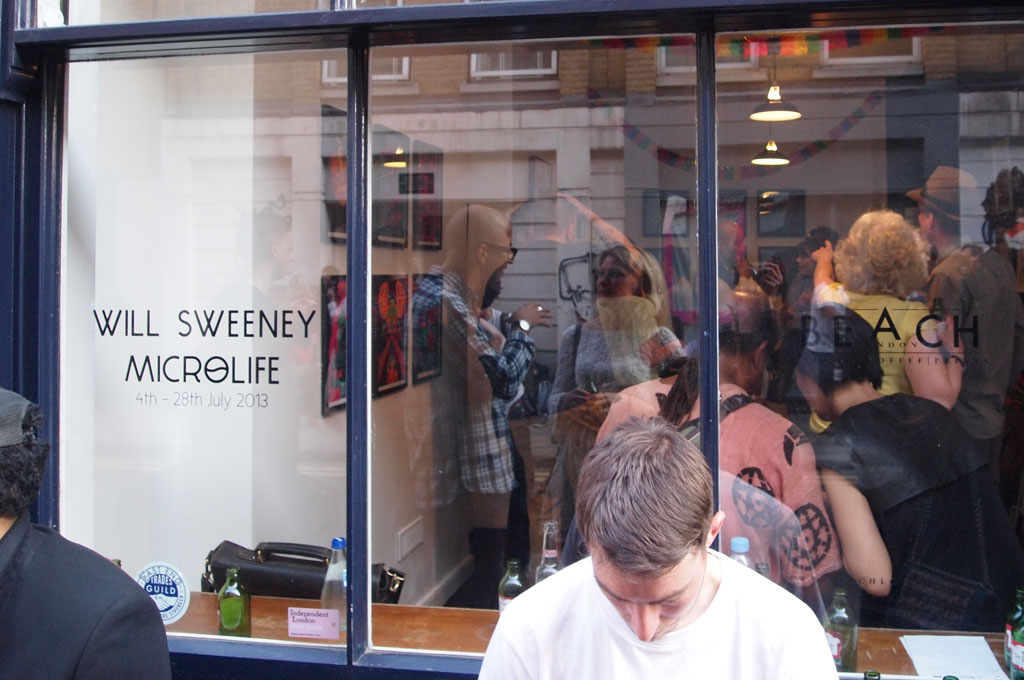
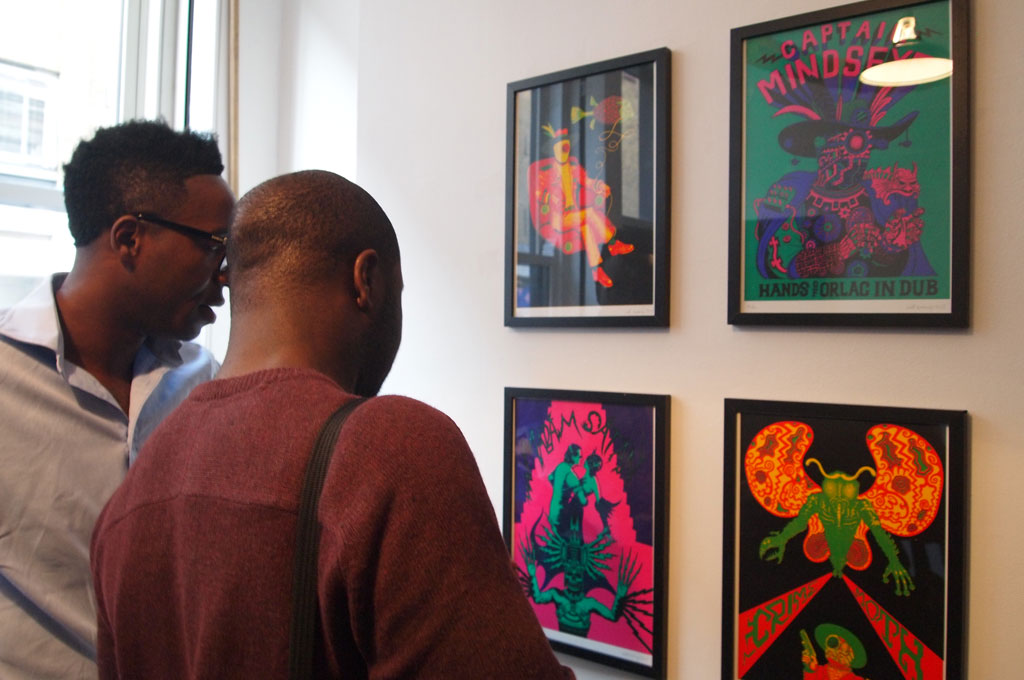
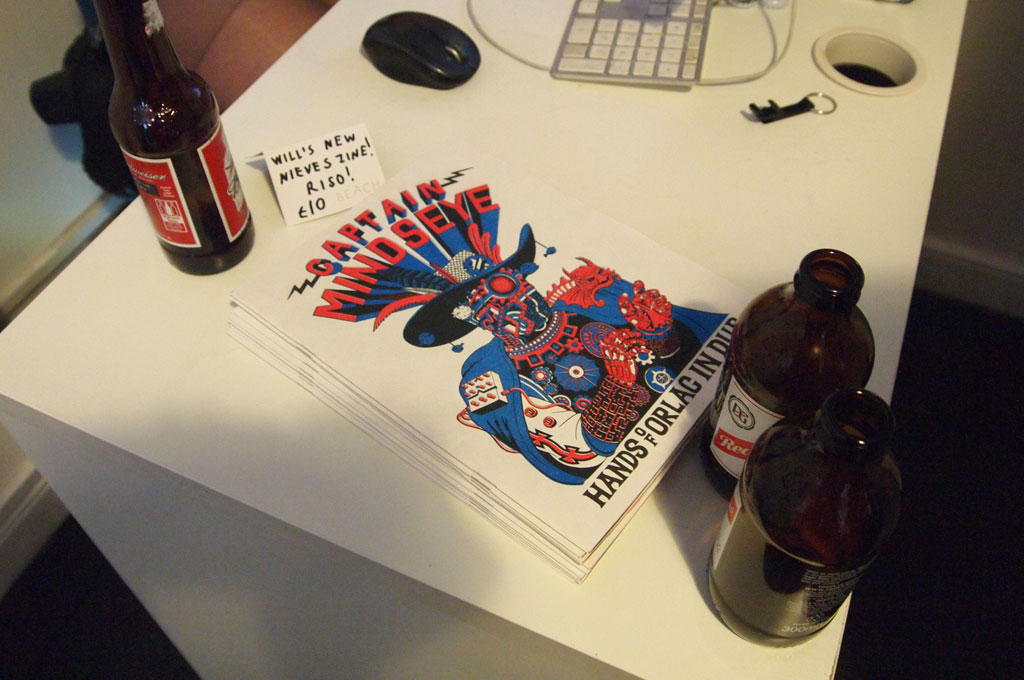
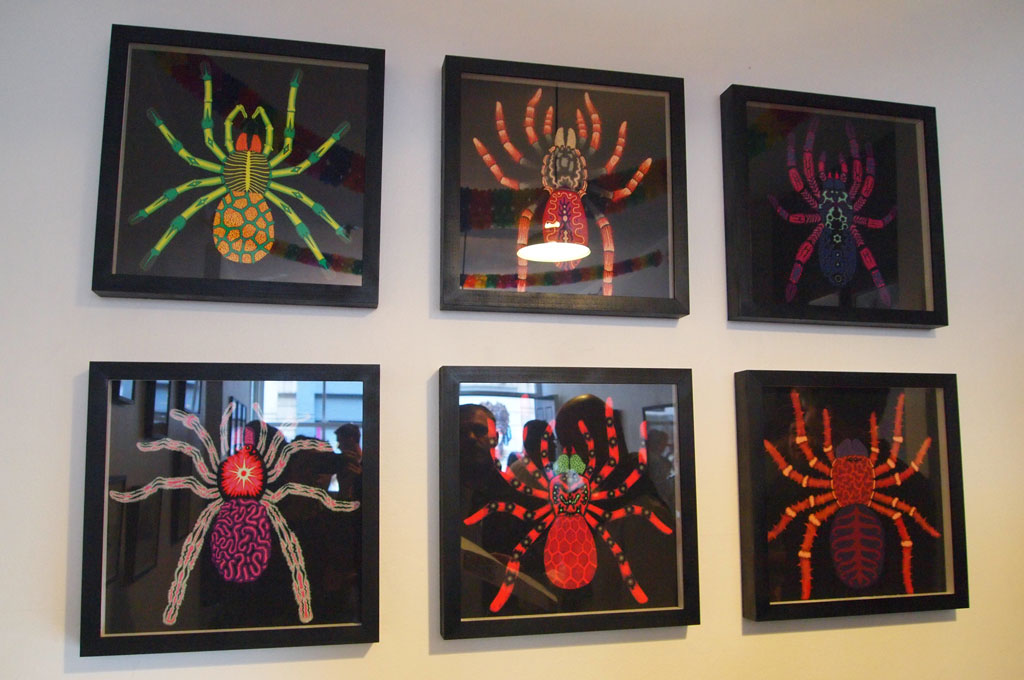
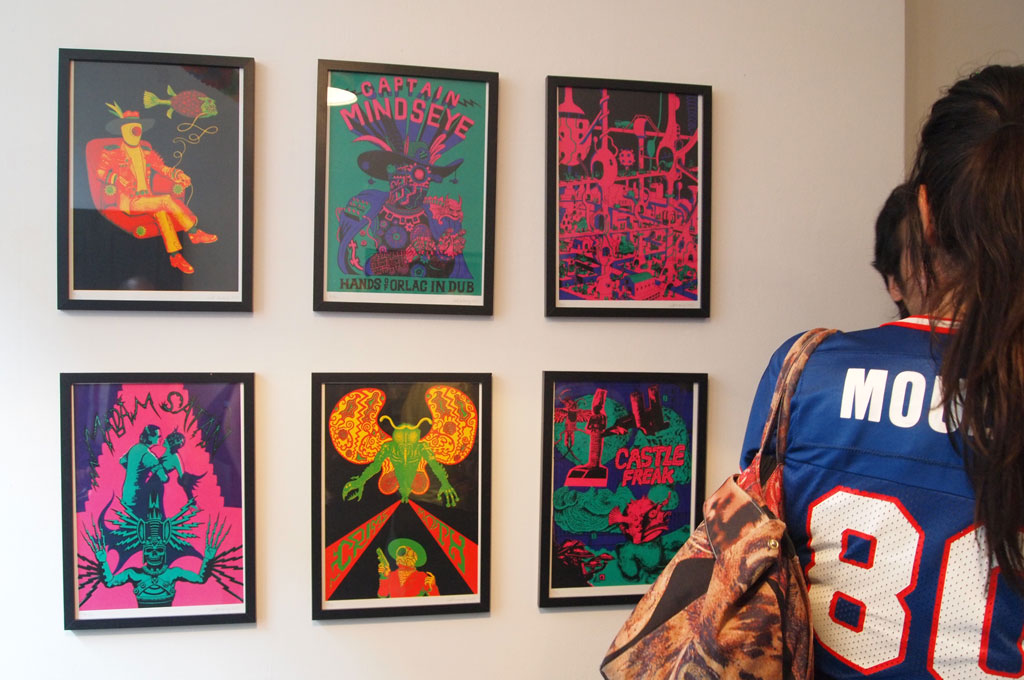
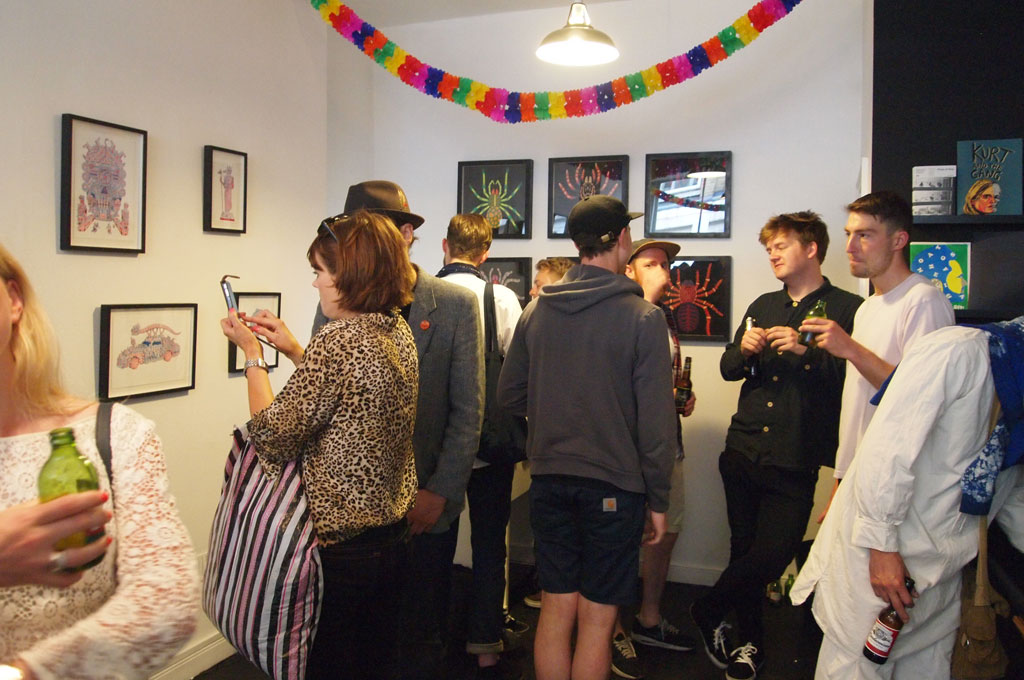
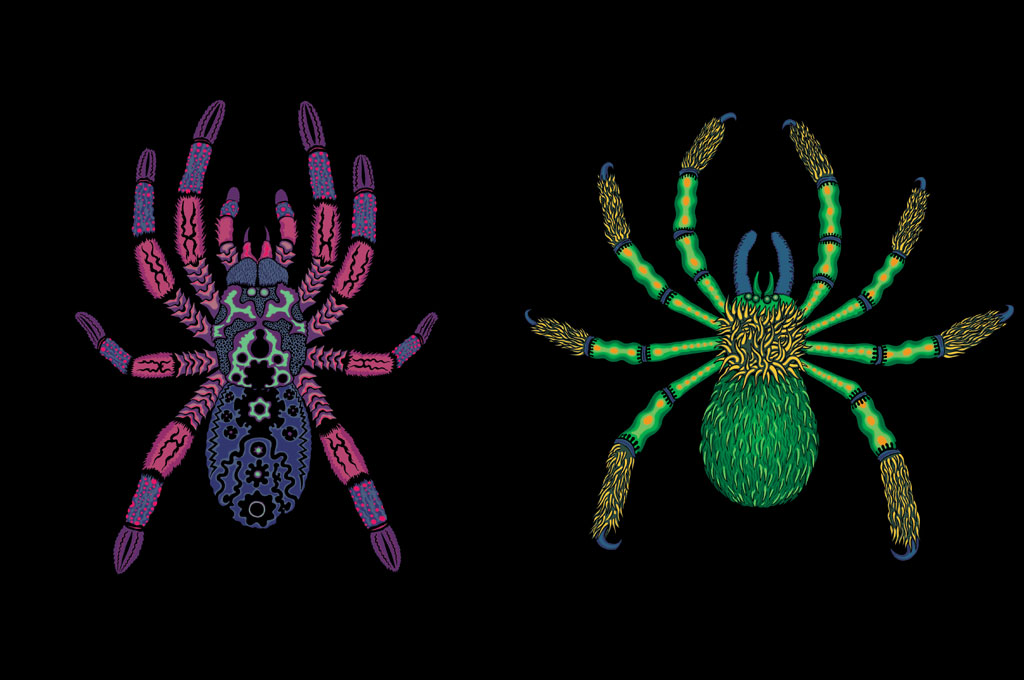
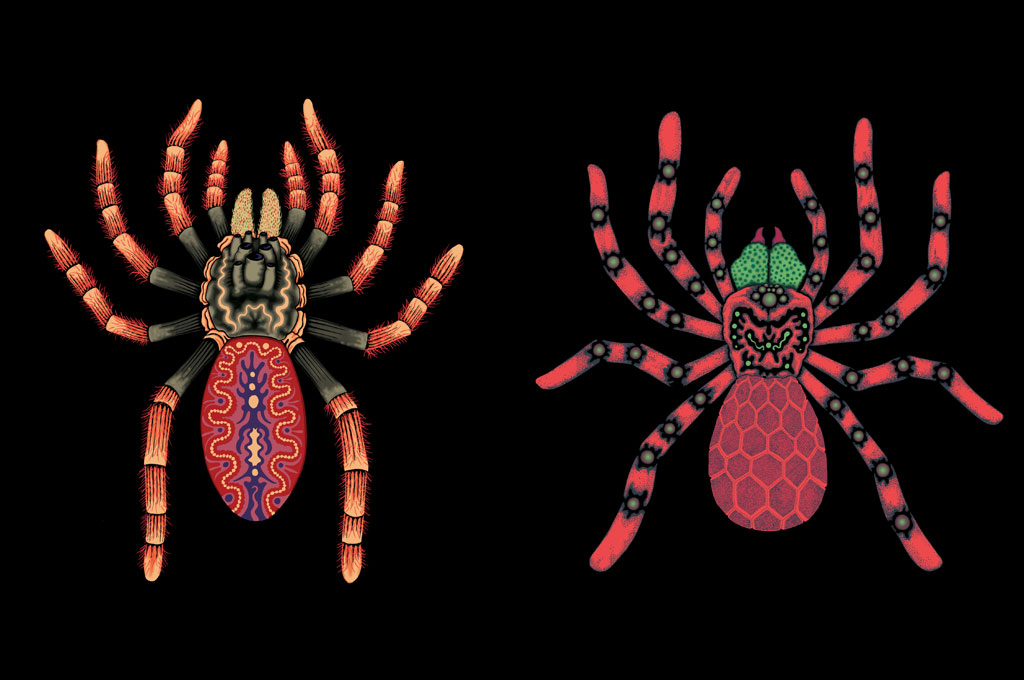
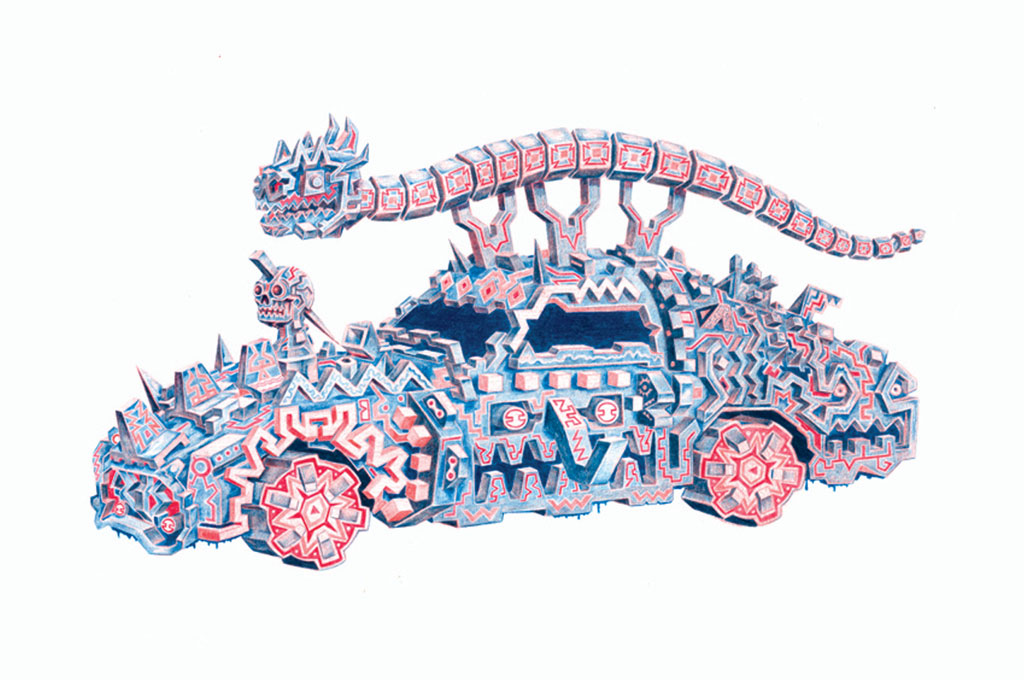
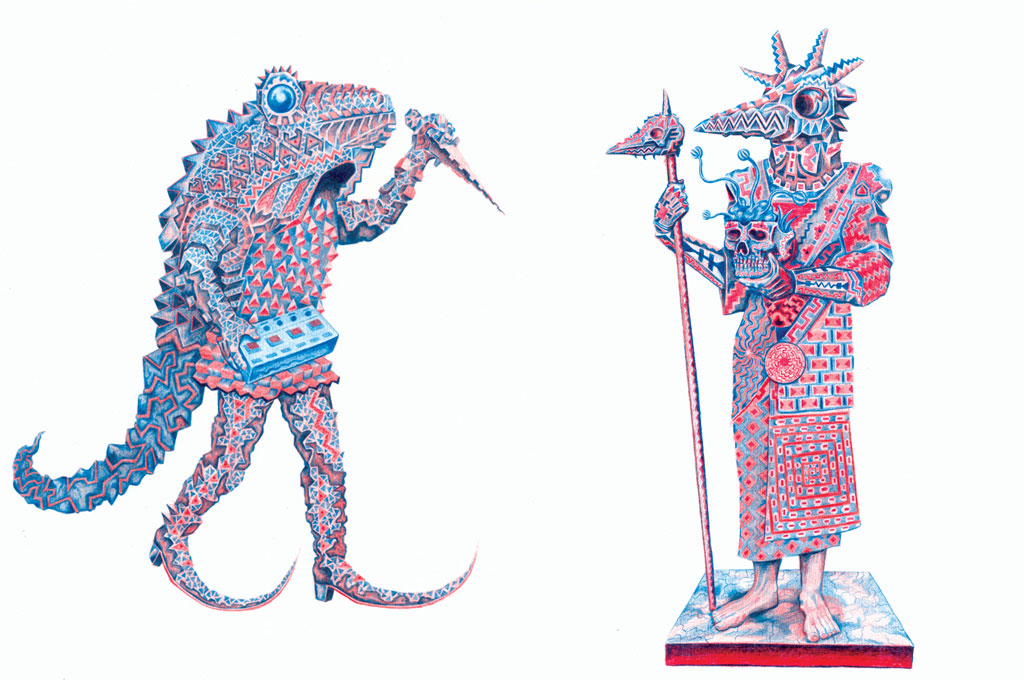
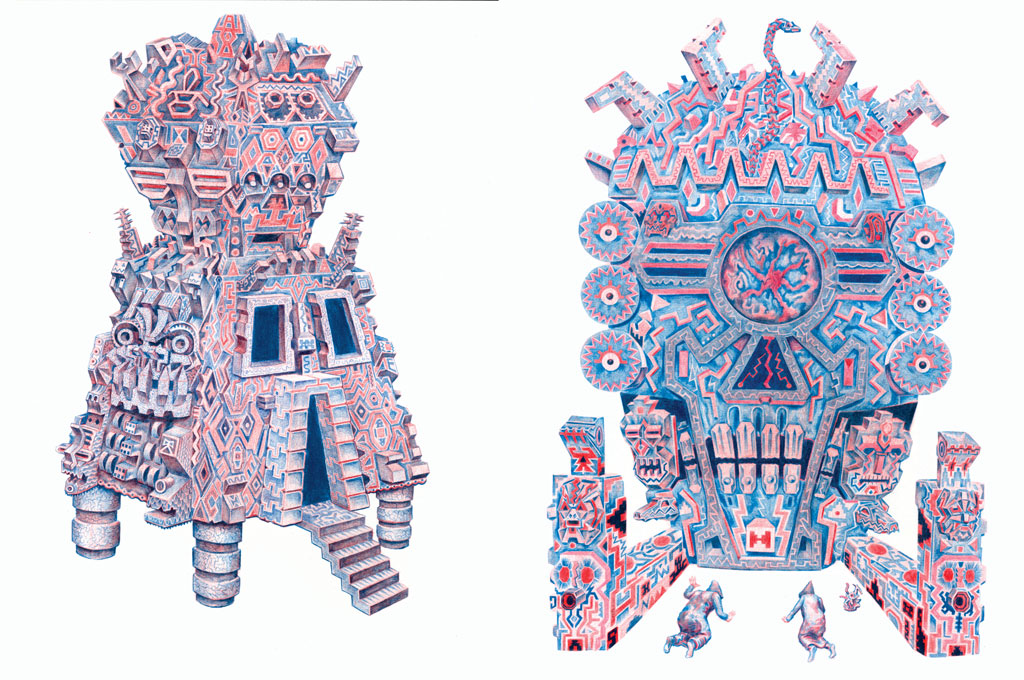
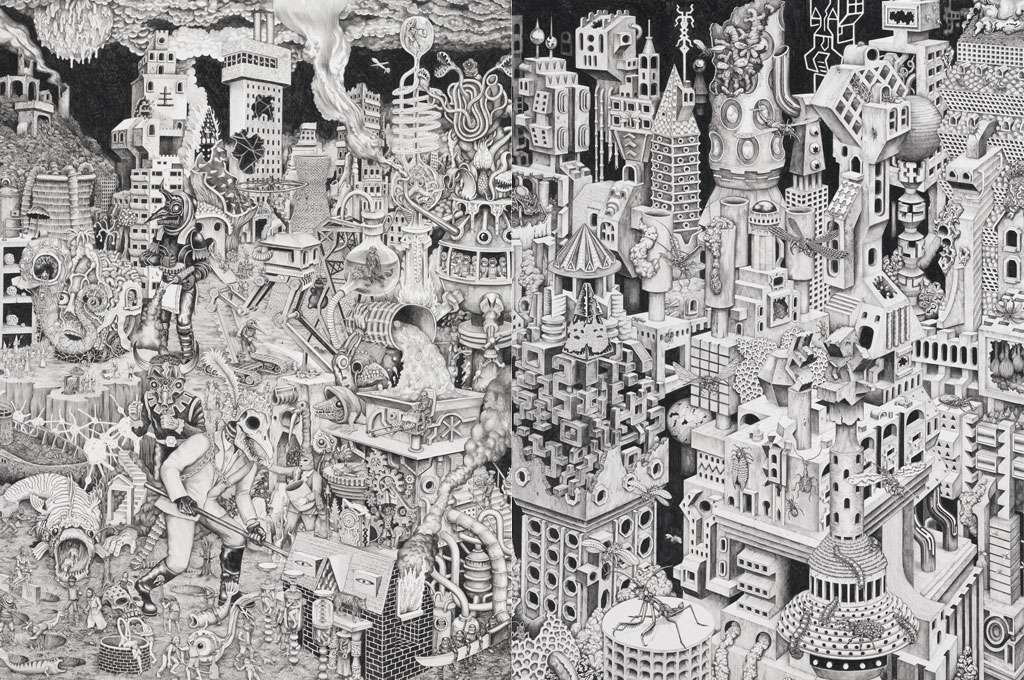
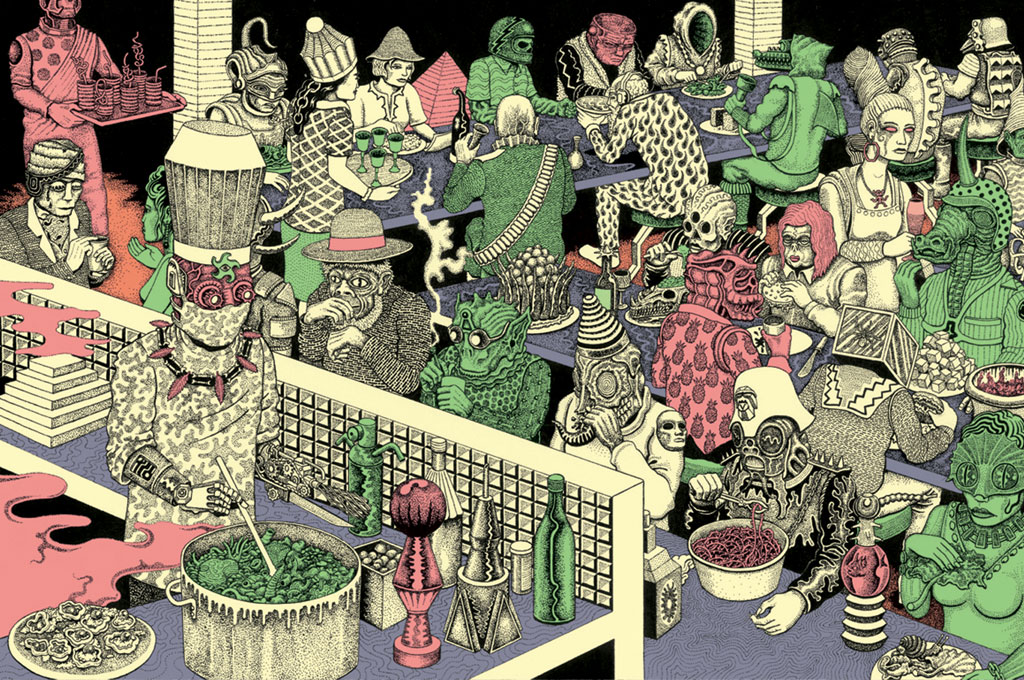
Strange, surreal, and psychedelic are words often used to describe Will Sweeney’s work. The London-based illustrator’s penchant for detailed and bizarre subject matters coupled with his comic book-like renderings give viewers rich, dizzying portraits that can either overwhelm or captivate.
There is a playful mannerism of style as well as color that recalls science fiction stories and comic books. This references to pop culture makes for an engaging, perhaps even nostalgic experience. What is most interesting, at least to me, is his regular use of long, high angles. This visual perspective creates a distance between viewers and the artwork, making them a sort of witness to what the portrait depicts. It is as if watching a surveillance video of a distant planet as its alien inhabitants go about their routines. Sweeney’s strange creatures and detailed illustration makes the experience gratifying, discovering fantastic new characters and objects at every corner.
Will Sweeney recently exhibited his latest work at the Beach London Gallery. Titled Microlife, much of the illustrations were inspired by his recent trip to Mexico. Having a rich art and cultural history, we can find elements in Sweeney’s work that seem distinctly Mexican. Two figures worshipping a temple-like architecture and a bird-headed priest/priestess-like figure holding a skull seem like an imagined Aztec or Mayan spiritual figure, while half lizard-half man wielding a knife (with what appears to be an ornamental jewel on its hilt) seems ready for a bloodletting sacrifice. Sweeney has illustrated humanoid creatures in the past, but these seems to be more spiritual than alien – there is a familiarity steeped in reality in the form of these individuals. Central and South American patterns have made its way to the facades of buildings and body of characters seemingly made of stone; its geometric patterns adding an extra rigidity to the already block-y, statuesque figures. Themes that are often found in Mexican Art (spirituality, death) appear numerous times in the form of temples, skulls, and other religious figures.
Mexico’s rich visual culture goes perfectly with Will Sweeney’s illustrative style, adding new elements and symbols that fit in to his fantastic world. The influence is apparent and integrated quite masterfully, avoiding trite adaptations. We can only wonder how different places and cultures will appear in his future work.
K: Could you describe your travel to Mexico? What did you do, what did you see, and what is your impression of the country?
We went to Yucutan peninsula, which is in the south east of Mexico. Mexico is a huge country and for my first visit I decided that it would be best not try and see everything, but rather focus on one area. The Yucutan has a kind of infrastructure for tourism too as a lot of people visit Cancun & Tulum from the USA, so it meant that it was safe and easy to get around. We went to some touristy areas but managed to see a more local side to it too. We visited Mayan ruins, nature reserves, saw incredible collections of Mexican folk art, and swam in underground sink holes called cenotes. I absolutely loved it; I found the people to be very friendly and polite; we ate amazing food and I really liked the relaxed and laid back pace of everyday life there. Mexico is very regional, and we only saw one small part. I’m really keen to go back and see Oaxaca, Chiapas and of course Mexico city.
K: Mexico has a long tradition of art from folk, colonial to the modern and contemporary. Does your current work refer to any particular Mexican art movement?
The work in the new show is inspired by the Mayan ruins that we visited, particularly the Mayan city of Uxmal, I was blown away by the intricacy and inventiveness of the stone carvings and building designs. We also went to Ek Balam, the temple of the black jaguar, Kabah – with its house of masks, hundreds of giant faces of Chac, the rain god. And we went to Tulum, one of the most iconic Mayan ruins overlooking the Caribbean sea.
K: As an artist, can you describe how you digest the culture and history you experienced in Mexico to adapt them into your work? Was Microlife based on a degree of research or would you say it was a relatively immediate response to your environment?
It was an immediate response. I feel that I’ve always had an affinity for Mexican art in general, but seeing the Mayan ruins really had an impact on me and it triggered a kind of subconscious reaction – once I got back to London and started drawing a lot of these images started to appear. I didn’t do a lot of academic research, but I think I kind of filtered what I saw and interpreted it in my own way. I saw the carvings and decorative designs of the Mayans and imagined them as a kind of virulent disease – like a fungus covering everything, buildings, vehicles, people… I like to imagine what would have happened if the Spanish hadn’t conquered the Americas and the indigenous tribes had developed without interference. The Mayans were simultaneously incredibly barbaric and incredibly sophisticated. Their scientific and astronomical discoveries were centuries ahead of their time, yet they believed in human sacrifice. If they had continued to exist and develop in isolation, would they have created automobiles and flying machines?
K: The name of your exhibition, “Microlife”, is described as a measure of mortality/life expectancy. What observations did you make during your travels that inspired you to discuss the theme of mortality in this exhibition?
The title is really a means of tying together the work in the show. Some of the work was made before I went to Mexico. There are two large pencil drawings which are about the end of the world as we know it. The Purposemaker is a Bosch like landscape, full of figures in conflict, a nightmare world of pain and disease. I see the end of human civilisation as a slow drawn out process, not a convenient Hollywood biblical ending like a giant flood or a meteor. In parallel to this, in the privileged western world we are obsessed with healthy lifestyles and in prolonging our existences. I’ve always been slightly preoccupied by the notion of death, and the idea of a microlife – a scientific way of quantifying the abstract. Measuring how much damage you are doing to your body every time you drink alchohol, smoke a cigarette or eat red meat is interesting to me.
Alongside this, Mexico is a country that has a really interesting attitude on death and the afterlife. The day of the dead festival in November is the time when families commune with the spirits of dead relatives. The Mayans were strong believers in the afterlife, believing it an honour to be sacrificed to their gods. I think we lack this element of spirituality in the west. I’m not referring to religion but more to an acceptance of the cycle of life and remembrance for the dead.
K: Your travel to Mexico has produced some of your best and most interesting work yet. Do you have plans to have another project of this kind in a different country? (perhaps Indonesia?) and what places would you like to travel to?
I don’t have any concrete plans at this moment but I would love to travel more and develop this way of working. Indonesia is somewhere I would love to visit. There seems to be so much to see there, both in terms of the ancient and the modern. I would like to visit Cambodia and see Angkor Wat. I also really want to go back to Mexico for Day of the dead!
—
Will Sweeney’s Microlife will be on display at the Beach London Gallery until July 28th. For further inquiries, you can contact Will Sweeney through Alakazam.
*note: images appearing in pictures number 12 and 13 have been cropped to fit Whiteboard Journal’s format.








